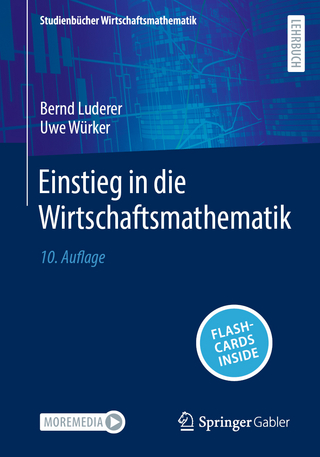
Intertemporal Asset Pricing
Physica (Verlag)
978-3-7908-1159-9 (ISBN)
1 Introduction.- 1.1 Subject of Analysis.- 1.2 International Evidence on the Risk-free Rate and the Equity Premium.- 1.3 Purpose and Outline of Analysis.- I Intertemporal Asset Pricing: Theory.- 2 The Market Pricing Kernel Approach.- 3 Implications of Asset Prices for the Market Pricing Kernel.- 4 Parametric Models of the Market Pricing Kernel.- 5 The Calibration Approach for Empirically Investigating Parametric Models of the Market Pricing Kernel.- II Intertemporal Asset Pricing: Empirical Analysis.- 6 Overview and Description of Data.- 7 Analyzing Variance Bounds of the Market Pricing Kernel.- 8 Applying the Calibration Approach.- 9 Evaluating the Calibrated Equilibrium Models.- 10 Conclusion.- A.1 Expected Value of the Product of Jointly Lognormally Distributed Variables.- A.2 Additional Tables and Figures.- List of Symbols.- List of Tables.- List of Figures.
| Erscheint lt. Verlag | 10.11.1998 |
|---|---|
| Reihe/Serie | Contributions to Economics |
| Zusatzinfo | XII, 287 p. 5 illus. |
| Verlagsort | Heidelberg |
| Sprache | englisch |
| Maße | 155 x 235 mm |
| Gewicht | 456 g |
| Themenwelt | Mathematik / Informatik ► Mathematik ► Angewandte Mathematik |
| Wirtschaft ► Betriebswirtschaft / Management ► Finanzierung | |
| Wirtschaft ► Volkswirtschaftslehre ► Ökonometrie | |
| Schlagworte | Analysis • Arbitrage • Asset Pricing • Deutschland; Wirtschaft • Intertemporale Gleichgewichtsmodelle • Intertemporal Equilibrium Models • Investment • Kapitalmarkt • Portfolio • Quantitative Finance • Rating |
| ISBN-10 | 3-7908-1159-9 / 3790811599 |
| ISBN-13 | 978-3-7908-1159-9 / 9783790811599 |
| Zustand | Neuware |
| Haben Sie eine Frage zum Produkt? |
aus dem Bereich


